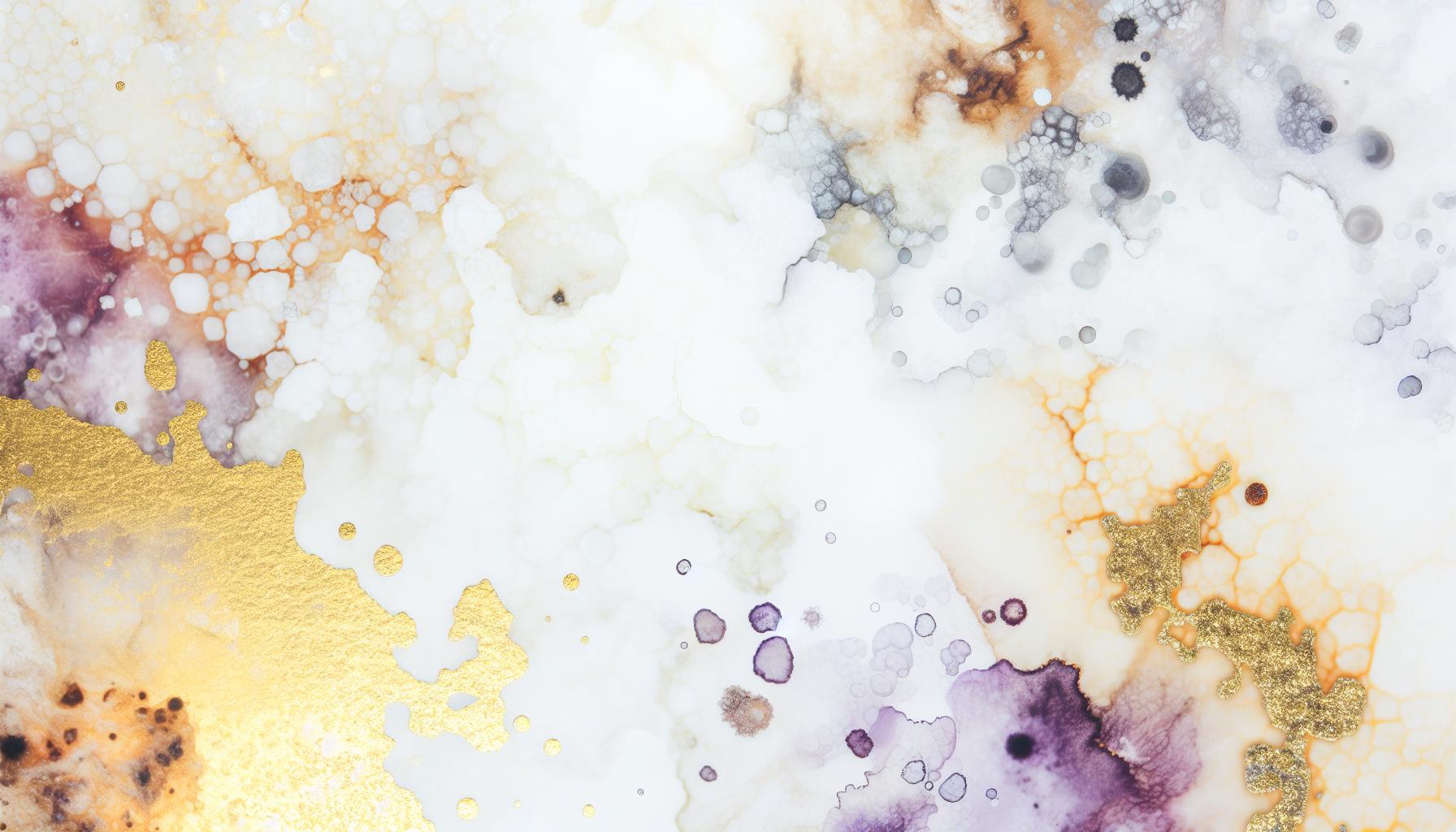Are you eager to encourage labor naturally? Nipple stimulation can be a simple yet effective method to stimulate contractions and initiate the birthing process. Understanding this technique empowers expectant mothers with a potentially non-invasive option for labor induction, making it a relevant topic for those seeking alternatives in their childbirth journey.
Understanding Nipple Stimulation: How It Works to Induce Labor
The role of nipple stimulation in labor induction may surprise many, as it taps into the body’s natural hormonal processes. When stimulated, the nipples send signals to the brain to release oxytocin, a hormone that plays a crucial role in initiating contractions.As contractions start to develop, the body may respond by creating a cascade of additional hormones that facilitate the labor process. this method is particularly appealing to those seeking natural alternatives to medical induction, as it is both cost-effective and non-invasive.
While the idea of using nipple stimulation might sound promising, research on its effectiveness presents a mixed picture. According to one study, even though nipple stimulation can lead to increased uterine activity, it does not guarantee an immediate onset of labor [[1](https://www.medicalnewstoday.com/articles/322326)].Intrapartum assessments suggest that while this technique is safe for most at-term pregnancies, its impact on actually inducing labor remains understudied [[2](https://www.sciencedirect.com/science/article/abs/pii/S2589933322000155)]. As such, understanding the nuances of this method is essential for expecting mothers considering it.
To effectively incorporate nipple stimulation into your approach to inducing labor, you might consider the following steps:
- Timing: Nipple stimulation should ideally be initiated when full-term, typically around 40 weeks.
- Method: Gently roll or rub the nipple for 5-15 minutes, taking breaks if contractions begin to intensify.
- Monitoring: Pay attention to your body’s signals; if contractions occur, cease stimulation and time the duration and frequency of contractions.
While nipple stimulation can be a powerful tool, it’s important to remain informed and cautious.Keeping regular interaction with your healthcare provider will help ensure that this natural method is appropriate for your individual circumstances and can assist in making informed choices during your labor preparation journey.
The Right time: When to Consider Nipple Stimulation for Labor
Understanding the ideal Timing for nipple Stimulation
Many individuals may wonder when to implement nipple stimulation as a method to induce labor effectively. Research indicates that nipple stimulation can lead to the release of oxytocin, thereby triggering uterine contractions.However, knowing the right time can significantly enhance its effectiveness and safety.Generally, it is recommended to consider this method when you are at or beyond the full-term mark, typically between 39 to 42 weeks of pregnancy.
- Consult Your Healthcare Provider: Before starting any form of labor induction, it’s crucial to have a discussion with your healthcare provider. They can assess your specific situation and determine whether nipple stimulation is appropriate.
- Recognize Signs of Labor: Nipple stimulation is best attempted onc you start noticing signs of labor, such as the baby’s descent, Braxton Hicks contractions becoming more frequent, or other physical indicators that your body is preparing for childbirth.
- Timing Is Key: It is indeed advisable to begin nipple stimulation in a agreeable and relaxed setting, ideally during the late evening or at night when you can afford some quiet time to focus on the process.
- Daily Routine: You may consider incorporating nipple stimulation into your daily routine once you reach your due date, recognizing that this practice could take several days to show results.
factors Influencing the Decision
Several factors can influence your decision on when to start nipple stimulation. Understanding these will help you tailor the approach to your unique circumstances:
| Factor | Impact on Timing |
|---|---|
| Previous Labor Experience | If you have had fast or successful labors in the past, you might opt to start nipple stimulation earlier. |
| Bishop Score | A low Bishop score may indicate that your cervix is not ready, suggesting you may want to wait longer. |
| General Health | Any health complications or concerns should be addressed with your provider before proceeding. |
the best time to consider nipple stimulation is when you are at least at full term and are already experiencing signs of labor. Listening to your body and consulting with your healthcare professional will ensure a safer approach to this natural induction method, providing peace of mind as you prepare for the arrival of your little one.
Preparing for Nipple Stimulation: Tips for a Safe Experience
Understanding Your Body’s Signals
Before embarking on the journey of nipple stimulation for labor induction, it’s crucial to understand your body’s signals and readiness. Nipple stimulation can trigger contractions, so be attentive to any signs indicating that your body might potentially be responding. If you experience regular contractions or heightened sensitivity after stimulation, it may be a sign that your body is preparing for labor. Always consult with your healthcare provider before starting this method to ensure it aligns with your individual health circumstances.
Creating a Comfortable Environment
A supportive and relaxing environment can enhance the experience of nipple stimulation. Here are some essential tips to prepare your space:
- Choose a private area: Ensuring privacy can help you feel more relaxed and focused.
- Use comfortable seating: Sit in a position that allows easy access to your breasts without straining.
- Dim the lights: A softer light can create a calming atmosphere.
- Consider soothing music: Gentle music can help you relax and reduce any anxiety.
Technique and Timing
When practicing nipple stimulation for inducing labor, the technique is as important as the timing. Here’s a guide to ensure you’re doing it safely and effectively:
| technique | Description | Timing |
|---|---|---|
| Gentle Massage | gently rub or twist the nipple between your fingers or massage the surrounding area. | 5 minutes on, 5 minutes off. |
| Alternating Sides | Stimulate each nipple alternately to encourage contractions. | 15-20 minutes per session. |
| Monitor Responses | Pay close attention to any contractions or changes in your body. | As needed, but don’t overdo it. |
Always remember to start slow and listen to your body. if you experience discomfort or prolonged contractions, stop and contact your healthcare provider. Using nipple stimulation can be an empowering tool for labor induction, providing a sense of control during pregnancy, but should always be approached with care and caution. By preparing adequately,you can enhance the experience and create a positive journey toward labor.
Step-by-Step techniques: How to Stimulate Your Nipples Effectively
Understanding Nipple Stimulation for Labor Induction
Nipple stimulation has emerged as a natural method many pregnant women consider when looking to induce labor. This technique works by releasing oxytocin, a hormone that can help trigger uterine contractions.Engaging in nipple stimulation is generally safe, especially for low-risk pregnancies at full term. Here’s an effective step-by-step guide on how to do nipple stimulation to induce labor.
Step-by-Step Techniques
- Choose the Right Environment: Find a comfortable and relaxing space. Stress can inhibit the hormonal response you seek, so it’s essential to create a calming atmosphere. Consider dim lighting and soothing music.
- Wash Your Hands: Always start by washing your hands thoroughly to prevent infections and ensure a sterile environment.
- Get Comfortable: Sit or lie down in a comfortable position. You may want to have supportive pillows and a blanket to enhance comfort.
- Choose Your Technique:
- Manual Stimulation: Use your fingers to gently pinch or roll your nipple between your thumb and index finger. Apply consistent pressure but avoid pain.
- Using a Breast Pump: if manual stimulation feels overwhelming, consider using a breast pump. Pump for about 15-20 minutes on each side. Ensure the settings are comfortable.
- Timing is Key: Perform nipple stimulation for about 30 minutes every 2-3 hours. This duration allows your body to respond effectively without overwhelming it.
- Stay Hydrated: Drink plenty of water throughout the process. Staying hydrated is crucial for overall health and can aid in the labor process.
- Monitor Your Body: Pay attention to how your body responds. If you notice any contractions, time them to see if they are becoming regular. Though, if you experience any concerning symptoms, consult your healthcare provider.
Possible Outcomes
It’s essential to recognize that while nipple stimulation is a method some women use, results can vary. Many find it an empowering way to help kickstart the labor process. However, it’s advisable to have discussions with your healthcare provider to discuss any risks or personal health considerations before proceeding with nipple stimulation as a labor induction technique.
By following these steps, you’ll be better equipped to effectively stimulate your nipples, possibly leading to the onset of labor in a natural and safe manner.
Recognizing Signs: How to Know If Nipple Stimulation is Working
Signs That Nipple Stimulation is Effective
Engaging in nipple stimulation as a method to induce labor can feel both exhilarating and uncertain. It’s essential to recognize the signs that indicate the technique may be working. Generally, the main goal of nipple stimulation is to promote uterine contractions, which are critical in the labor process. Here’s how to identify whether your efforts are paying off:
- Increased Frequency of Contractions: One of the primary indicators that nipple stimulation is effective is the timing and frequency of contractions. If you notice that your contractions are becoming more regular, occurring typically every 5 to 10 minutes, this is a promising sign that your body is responding.
- Change in Contraction Intensity: As you practice nipple stimulation,pay attention to whether the intensity of your contractions increases. If they transform from mild tightenings to more pronounced cramps or pains, this could imply that your body is gearing up for labor.
- Duration of Contractions: Effective nipple stimulation should also lead to longer-lasting contractions. Keep an eye on their length; ideally, they should last about 30 to 60 seconds.
- Physical Signs of Labor: Look for other signs that labor is approaching, such as increased pressure in the pelvic area or the release of the mucus plug. These symptoms, combined with contractions, can suggest that nipple stimulation is helping to trigger labor.
Monitoring Your Body’s Response
As you engage in this process, it’s crucial to listen to your body.Take notes on your contraction patterns and any changes you observe. Documenting your experiences can help you identify what works best for you and keep track of how long each session lasts. This self-monitoring is particularly helpful if you choose to discuss your progress with a healthcare provider.
| Sign of Effectiveness | Description |
|---|---|
| Increased Contraction Frequency | Contractions occurring every 5-10 minutes |
| Enhanced Intensity | Contractions feel stronger and more painful |
| Extended Duration | Contractions lasting 30-60 seconds |
| physical Signs of Labor | Pelvic pressure and release of the mucus plug |
Engaging in regular sessions of nipple stimulation can empower you as you approach labor. By recognizing these signs of effectiveness, you can better understand your body’s response and potentially expedite the labor process in a natural and safe manner.
Addressing Concerns: What to Discuss with Your Healthcare Provider
Understanding the Importance of Communication
When considering techniques like nipple stimulation to induce labor, engaging in an open dialog with your healthcare provider is crucial. Many women feel anxious about the timing of labor onset,and exploring non-medical interventions can offer a sense of control.However, individual circumstances vary widely, and it’s essential to ensure that nipple stimulation is appropriate for your specific health conditions. Express your concerns about labor timing,and inquire if nipple stimulation could be a suitable option for you based on your pregnancy’s progress and any underlying medical conditions.
Key Questions to Discuss
Before diving into how to do nipple stimulation to induce labor, prepare a list of questions that can guide your conversation with your healthcare provider. Here are some critically important points to consider:
- Is my pregnancy low-risk? Understanding your pregnancy’s risk level helps determine the appropriateness of nipple stimulation.
- Are there any potential complications? Inquire about specific risks associated with nipple stimulation, particularly if you have a history of complications.
- what are the signs that signify it’s time to start? Knowing when to begin can prevent premature attempts and needless stress.
- How should I perform nipple stimulation safely? Discuss proper techniques and duration to ensure effective and safe induction.
Considerations for Effective Induction
your healthcare provider can offer guidance tailored to your unique situation, enabling you to engage in nipple stimulation as part of a broader plan for labor induction. Make sure to discuss how often and for how long you should apply stimulation to optimize the release of oxytocin, the hormone that promotes contractions.Additionally, it may be beneficial to combine nipple stimulation with other methods, such as walking or relaxation techniques, to increase its effectiveness.By actively participating in this conversation, you’ll not only feel more empowered throughout the process but also make informed decisions that align with your health and safety. Understanding all aspects of how to do nipple stimulation to induce labor ensures you approach the situation with confidence and clarity.
Alternatives to Nipple Stimulation: Exploring Other Labor-Inducing Methods
Exploring Effective Alternatives to Induce Labor
While nipple stimulation is a well-known natural method for inducing labor, many expectant mothers may seek additional options that can complement or serve as alternatives. Understanding these diverse methods can empower women in their journey towards labor. Some alternatives dating back to ancient traditions include various activities and dietary adjustments that may help stimulate contractions and encourage labor.
- Red raspberry leaf tea: Known for its potential to tone the uterus, this herbal remedy is frequently enough consumed in the weeks leading up to delivery. Many believe it can help facilitate a more efficient labor process when the time comes.
- Sexual intercourse: Engaging in sexual activities can release prostaglandins, which may encourage cervical ripening. Additionally, the act itself can sometimes lead to contractions for some women.
- Castor oil: While its efficacy is debated, some women use castor oil to stimulate the intestines, which can subsequently trigger labor. However, it’s crucial to consult with a healthcare provider before trying this method, as it may cause discomfort.
- Acupuncture: this conventional Chinese medicine practice has been utilized for centuries to promote labor. It aims to stimulate specific points in the body that may facilitate uterine contractions.
Practical Application of Natural Induction Methods
Implementing these methods requires careful consideration and, ideally, guidance from a healthcare professional. Here is a simplified overview of how each method may work:
| Method | How it effectively works | Considerations |
|---|---|---|
| Red Raspberry Leaf Tea | May strengthen uterine muscles | Start drinking it in the third trimester; avoid high doses. |
| Sexual Intercourse | Releases prostaglandins; can stimulate contractions | Safe only if there are no complications in the pregnancy. |
| Castor Oil | Stimulates the gastrointestinal tract, potentially leading to contractions | Can cause nausea; consult a healthcare provider. |
| Acupuncture | Targets specific acupoints to promote labor | Seek a licensed acupuncturist experienced in obstetrics. |
Incorporating one or more of these natural methods can provide a holistic approach to labor induction. Consulting with a healthcare provider is essential,especially when adopting new practices. This exploration of various alternatives can offer a supportive pathway as you navigate toward childbirth.
Q&A
What is nipple stimulation to induce labor?
Nipple stimulation to induce labor is a natural method that involves gently stimulating the nipples to promote uterine contractions.This technique can help signal the body to begin labor, as it releases oxytocin, a hormone that plays a crucial role in childbirth.
Many expectant mothers seek alternative methods for inducing labor, especially as their due date approaches. Nipple stimulation can be performed manually or with a breast pump and is often viewed as a low-cost and accessible option. Though, it’s essential to discuss this method with your healthcare provider to ensure it’s appropriate for your situation.
How to do nipple stimulation to induce labor?
To perform nipple stimulation, gently rub or roll your nipples between your fingers for about 30 minutes. You can alternate between sides and take breaks as needed. This process can be done manually or using a breast pump to simulate the action.
It’s recommended to do this in a comfortable position, ideally in a calm environment. regular practice can help stimulate contractions, but results may vary. If you’re considering this method, it’s wise to consult with your healthcare provider for personalized guidance and safety tips.
Why does nipple stimulation work to induce labor?
Nipple stimulation works to induce labor as it triggers the release of oxytocin,which causes the uterus to contract. This hormone is naturally produced during labor, making stimulation an effective method to encourage the onset of contractions.
Additionally, the contractions induced by nipple stimulation can help dilate the cervix, which is necesary for labor progression. However, the effectiveness can vary between individuals, and medical guidance is essential to ensure a safe approach.
Can I use a breast pump for nipple stimulation?
Yes, using a breast pump is a common method for achieving nipple stimulation. A breast pump can provide consistent and effective stimulation, potentially speeding up the process of inducing labor.
when using a breast pump, aim for sessions of around 15-30 minutes, alternating breasts as needed. It’s also crucial to be mindful of the amount of stimulation, as excessive use may lead to discomfort or stress. Always discuss this technique with your healthcare provider to ensure it’s safe for you.
Is nipple stimulation safe for everyone?
Nipple stimulation is generally considered safe, but it’s not suitable for every pregnancy. Women with certain complications, such as placenta previa or a history of preterm labor, should avoid this method.
Before attempting nipple stimulation, it’s essential to consult with your healthcare provider. They can assess your specific circumstances and provide personalized advice,ensuring the safety of you and your baby. You can find more advice on safe labor induction methods from reliable resources like the ACOG.
How often should I practice nipple stimulation to induce labor?
Practicing nipple stimulation can be done several times a day as your due date approaches, but moderation is vital. Sessions of 15-30 minutes per side, a few times daily, can be effective without overexerting yourself.
Listening to your body is essential during this process. if you start experiencing important contractions or discomfort, it’s best to stop and consult your healthcare provider. Finding a balance in frequency can definitely help you feel more in control and comfortable as you await labor.
What should I do if nipple stimulation doesn’t work?
If nipple stimulation does not initiate labor after a few sessions, it’s essential not to get discouraged. Each pregnancy is unique, and what works for one woman may not work for another.
If you’re still concerned about labor induction methods, discussing other options with your healthcare provider is crucial. They can provide insights into safe medical interventions if needed and reassure you during this exciting yet challenging time. Remember, patience is key as you approach your labor.
Final Thoughts
As you embark on the journey to induce labor naturally through nipple stimulation, remember that this approach can serve as a supportive method in conjunction with your healthcare provider’s advice. Engaging in nipple stimulation might release hormones that can encourage uterine contractions, making it a potential tool for expectant parents, especially those who are at full term and have low-risk pregnancies [1[1][2[2]. While results can vary and not all studies confirm its effectiveness in triggering labor [3[3], many find comfort in knowing there are natural methods available.
We invite you to explore more about this technique and how it can fit into your unique birthing plan.Remember, every pregnancy is diffrent, and it’s essential to stay informed and connected with your healthcare team. Your journey into parenthood is a remarkable one—take it step by step, and know you’re not alone. For more insights, tips, and support as you prepare for this life-changing moment, stay engaged with our community and resources!








